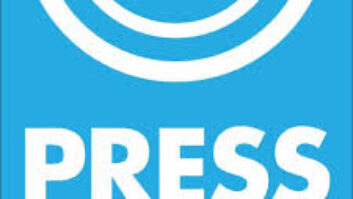
Engineers have the reputation, probably deserved, for placing a high value on equations, numbers, data and similar forms of information.
Engineers believe that these types of information are best for communicating the nature of reality to others.
Lord Kelvin is often quoted: “When you cannot measure it, when you cannot express it in numbers, your knowledge is of a meager and unsatisfactory kind.”
Nevertheless, I take exception to his 19th century view for two reasons.
First, even when numbers are accurate and reproducible, there is no intrinsic meaning to them.
You would not buy an automobile on the basis of thousands of numbers about internal construction and observable behavior. If I described your current employer and properties of your professional life in numeric form, you would have learned nothing. Even a simple numeric measure of harmonic distortion tells you very little about quality.
For this reason, I prefer Albert Einstein’s 20th century version of the quotation: “Not everything that can be counted counts, and not everything that counts can be counted.”
Second, natural language is too central to human existence to be ignored.
Consider trying to do your job without the use of ordinary language, be it written or verbal. Imagine being at work without discussing ideas in meetings or documents. Productivity rapidly would degrade to nothing. We need ordinary language even when discussing highly technical subjects. But this then brings up questions about common language as a way of communicating.
Language has been the subject of study of millennia. In the 20th century, specialists created a framework of linguistic theory based on academic research. From our current perspective, their work described an idealized picture of what researchers thought language should be in some kind of theoretical world.
More recently, a new generation of linguists has begun to look at how real people actually communicate, by using metaphors in a verbal dance.
A metaphor is a figure of speech in which an expression is used to refer to something that it does not literally denote in order to suggest a similarity. For an audio engineer, the most obvious examples are words pertaining to sound, which are often described with such adjectives as bright, muddy, transparent, enveloping, heavy, distant, ponderous, warm, intimate, etc.
All of these words are borrowed from physical objects, visual experiences or other sensory modalities. Literally, a physical window can be transparent because one can see through it, but we do not see though sound. Such metaphoric words serve a function because we assume that sound engineers have shared experiences and a common vocabulary. My daughter would not understand these sound adjectives, and neither would the CEO of your station (unless he or she had been a sound engineer in another life).
Analyze the italics words in the following: “Try to pack more thoughts into a few words.” While you can pack a suitcase with physical clothes, words have no emptiness that can be filled. Or consider this: “The idea was buried in a sea of text.” You bury something by digging a hole, putting something in it and then covering it up; text is not water.
Other metaphors are borrowed from physical experiences, such as up and down. “I am feeling up.” Why should happy be upwards, which is simply the reverse direction from what gravity does with a ball? The list is large. “Wake up; he is in top shape; I am all over the situation.” Conversely, we say “I am feeling down” or “he let me down.” Why should upwards really be better than downwards?
If I have piqued (which is also a metaphor) your interest from my comments take a look at the book “Metaphors We Live By” by George Lakoff and Mark Johnson.
Our honorable editor Michael LeClair has contributed his understanding of this metaphor: to pique comes from the French word pique, a sharp blade at the end of a wooden lance. The word pique has dual elements: provocation and curiosity.
VERBAL COMBAT
An important metaphor system influences professional discussions, which have elements of an argument. At least in our culture, metaphors of warfare and combat are used frequently. I was unaware of this until I read Lakoff and Johnson; as a result, I am cleaning up my language.
Take these examples. “Your assertions are indefensible; I demolished his argument; he shot down my conclusions; the criticisms were on target.” We may have no interest in a discussion becoming combative even though we use a combative language. In another culture, a dance metaphor might be used in a discussion. Many foreign cultures have metaphors that do not translate into English.
We tend to use a mechanized language for thinking and ideas, hence concretizing something that is intrinsically ethereal and abstract. “My mind is not operating today; my wheels are now turning; I am feeling rusty today; we are running out of steam; her ego is fragile; the experience shattered him.” Metaphors communicate hidden associations.
Other cultures and subcultures use different types of metaphors, and when crossing metaphor boundaries, communications breaks down. We forget how much of our cultural biases leak into everyday life. Racial, gender and age discrimination originates in part from basic differences in the metaphors that are used to communicate. The subculture of teenagers might say this stuff is way cool, or really hot.
NOT PRECISE
In my 40 years as a consultant, I have accumulated numerous words and concepts that are believed to be unambiguous but which have no real meaning. To demonstrate the ambiguity of concepts, I often take a group of random people and ask them to define the word “trust.” Each person writes down his personal definition and I then read them to the group. For fun, try this experiment with your colleagues.
I have observed a wide range in meaning. At one extreme, the phrase “I can trust him” means that he will take care of me and protect my interests, covering my back whenever possible. At the other extreme, it can mean that he consistently damages my stature and career at every opportunity.
Here is a list of other words whose meanings are at best loose: learn, manage, should, expect, fair and assume. You may have a clear understanding of each of these words, but it is usually the case that your colleague or manager will have a different definition. Consider this example: “You should check the transmitter.” Does that mean that this is a high-priority action item? Or does it mean that in an ideal world, somebody should check it someday if they have nothing better to do?
Some words have dual but opposite meanings. Is the word sophisticated a positive or negative adjective? The word originally referred to someone who had broad experience in a wide variety of areas but whose experience was at the surface with no depth. The root is the same as sophomoric (also a sophomore in the second year of school), meaning the beginning of knowledge without an awareness of what is not known. Breadth of experience is positive but shallow understanding is negative.
Without realizing the bigger issues, I first experienced word ambiguities when I worked in Germany in the late 1960s. Translating a word, and hence a concept, across languages and cultures forces the hidden issue into consciousness.
How many English speakers recognize that the common word another has two meanings? In the sentence, “we should get another tube for the transmitter,” another could mean a replacement for the existing tube because it is likely to die at any time, or it could mean that we should have an extra tube as a spare even though everything is fine. The two meanings are “additional” and “replacement.”
If you want to improve your relationships at work, start to pay attention to the words that you use because they contain metaphors. The metaphor’s assumptions are communicated along with the ideas. Similarly, you need to watch for cases in which metaphors either are not shared or have critically important differences among subcultures.
Where does that leave us? Language is flawed and riddled with ambiguous metaphors, but numbers are mostly meaningless quantities even if the details are specified. By proving that language is deficient, one cannot therefore conclude the reverse: that numbers have value in human activities. I can measure the performance of an MP3 encoder but those numbers say nothing about the human experience. We do not hear numbers, we hear music. When one traces numbers and facts to their root, we again find people with human foibles that are simply an artifact of nature’s grand experiment in evolution.
Numbers and words are both tools of communications and both can be used to communicate or to mislead.
Barry Blesser is director of engineering for 25-Seven Systems.











